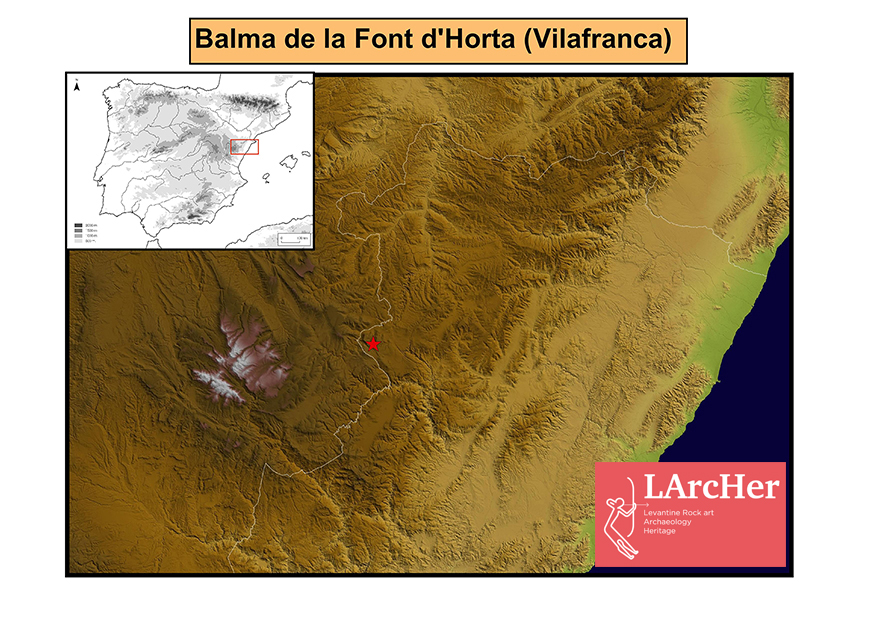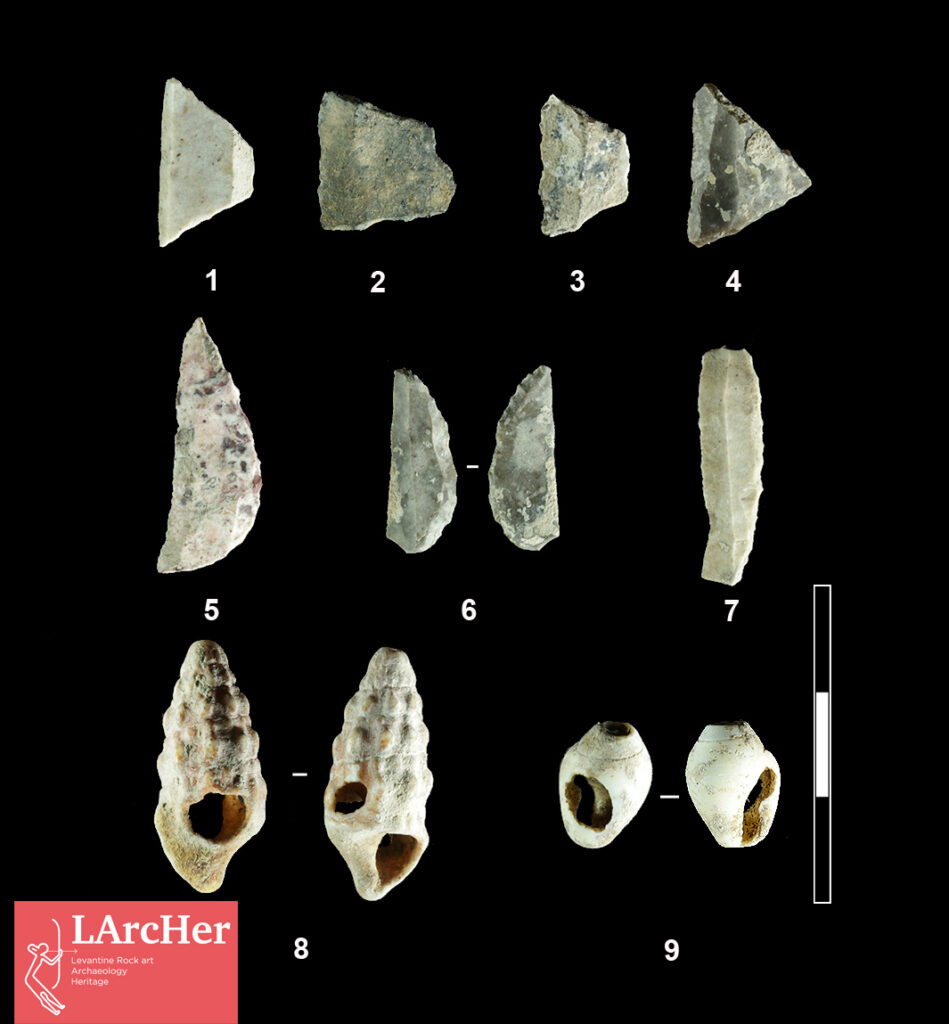The study of the archaeological remains of the Font d’Horta shelter places this occupation among the last Mesolithic settlements or a leading Neolithic group exploring the terrain
The study of the remains found in the shelter of the Font d’Horta (Vilafranca, Castellón), carried out by the researcher of the GenT program Dídac Román of the Universitat Jaume I de Castelló (UJI) and the researcher Inés Domingo of the University of Barcelona, has concluded that we are facing a settlement of one of the last hunting and gathering populations that inhabited the Iberian Mediterranean, as explained in the article published in number 73 of the Aranzadi journal Munibe Antropologia-Arkeologia.

The Font d’Horta shelter is a small cavity about three meters long by two deep that is located on the right bank of the ravine that gives it its name, more than 1,200 meters above sea level in the municipal area. Vilafranca, which due to its location on a long cliff could form part of a larger cavity. The site was discovered in 2016 and in 2017 excavation work was carried out that allowed the recovery of 451 elements: 437 remains of lithic industry, 10 of fauna, 3 hanging ornaments and a dye.
The study of the recovered remains, where the absence of ceramics and the presence of geometric projectiles stands out, make the two researchers think that the site belongs to a human group from the end of the Mesolithic. A very interesting piece of information is the presence of a piece with a double bevel retouch, a style of projectile manufacturing that is usually linked to the first agricultural and livestock populations.
The presence of this piece “makes us think that this hunting group had had contact with the first Neolithic who were arriving in our territory”, explain Román and Domingo.
Given the presence of the double-beveled segment (a piece that has been the subject of an interesting discussion about its chronocultural affiliation in the last 40 years), the research team decided to send a small fragment of the bone, probably from a deer, for radiocarbon dating and try to know the exact date of the occupation of the cavity.

The date obtained –7570-7441 cal. BP (5621-5492 cal. BC)– “shows that the world of the human group that occupied this site was immersed in a process of change, either because they were the last or because they were the first of two economic systems that in those moments could be coexisting in the east of the Iberian Peninsula. The analysis of all the data means that we finally opted for the first option”, comment Román and Domingo.
Of the faunal set found, ten pieces, only two have been identified, one of a deer and the other of a goat, which are the two most represented animals in the surrounding Mesolithic sites. And as for the adornment elements, three small perforated sea snails have been recovered, typical species of Mesolithic adornments in the peninsular Mediterranean and the Ebro valley.
This study is part of the projects that this team has been carrying out in the Maestrat and Els Ports area for more than a decade, and which are making it possible to make very significant progress in understanding the latest hunting and gathering societies, as well as in the study of Levantine rock art in our territory.
The research has been carried out within the framework of the HAR2016-80693-P projects (Ministry of Economy, Industry and Competitiveness), of the ERC CoG LArcHer project, funded by the European Research Council (ERC) through the research and innovation program of the European Union Horizon 2020 (grant agreement no. 819,404), and the CIDEGENT/2018/043 project of the GenT Plan of the Generalitat Valenciana.

Bibliographic information:
¿Últimos mesolíticos o pioneros neolíticos? El Abrigo de la Font d’Horta (Vilafranca, Castelló, País Valenciano) / Last mesolithics or first neolithics? Font d’Horta Rockshelter (Vilafranca, Castelló, Valencian Country)
MUNIBE Antropologia-Arkeologia nº 73 Online First DONOSTIA 2022 ISSN 1132-2217 • eISSN 2172-4555
DOI: https://doi.org/10.21630/maa.2022.73.01
Press release from Asociación RUVID


